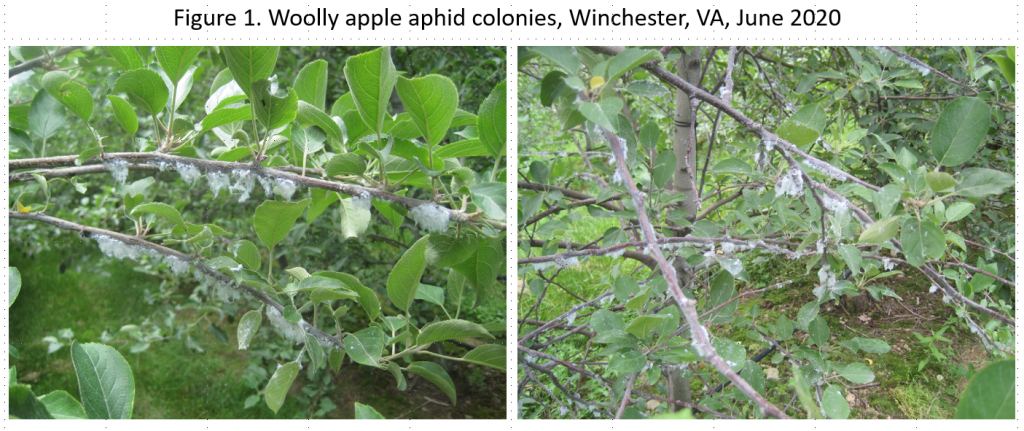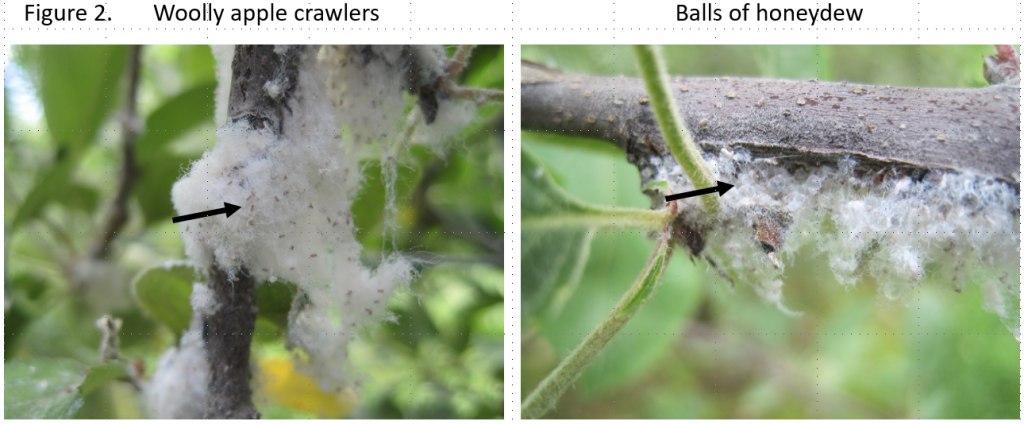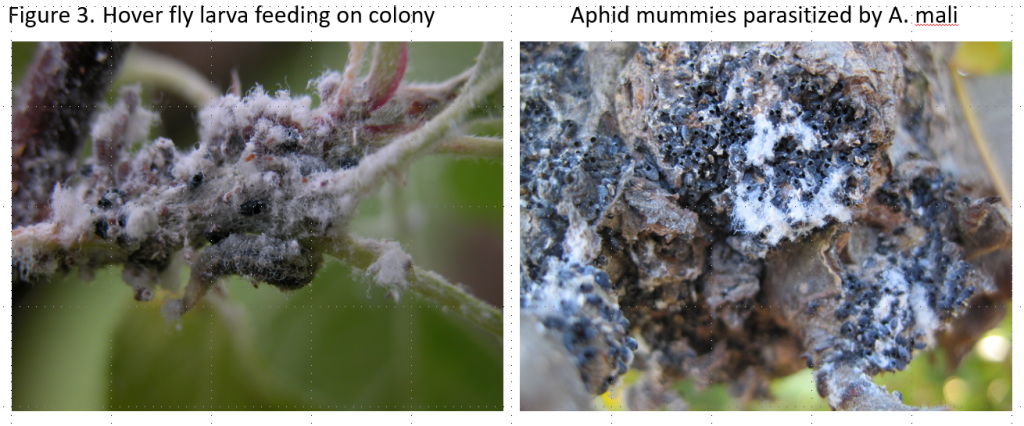I have had reports that woolly apple aphid (WAA) populations in some apple orchard blocks in Virginia are greater than usual for this time of the year. WAA is a very common, year-round resident in many orchards, overwintering on apple roots and then colonizing the branches and shoots from about May until October. It is common to find a few small colonies at this point in the season, but the colonies shown in Figure 1 below are larger and more numerous than expected. Figure 2 shows colonies that are healthy and active, indicated by the production of crawlers that will disperse and form new colonies and the round balls of honeydew from their feeding. These features are best viewed with a hand lens, an important scouting tool for many purposes. If not controlled by natural enemies or insecticides, the kinds of infestations shown below can cause premature defoliation of affected shoots, galling and splitting of shoots, and the growth of sooty mold from the honeydew on leaves and fruit.


If undisturbed by insecticides and/or environmental factors such as weather, at least two key groups of natural enemies usually prevent WAA colonies from increasing in number and size in orchards in our region. The most common of these are hover fly larvae, which feed on the aphids, and the wasp, Aphelinus mali, which parasitizes the aphids (Figure 3). Colonies attacked and fed on by hover fly larvae or other predators take on a disturbed/disrupted appearance compared with those in their natural state. Aphids parasitized by A. mali become jet black, and are called mummies. The holes in the aphid mummies in the photo below are where the adult wasp chewed its way out after its larva completed development in the aphid.

My scouting of colonies in the infested orchard block at our research station revealed less natural enemy activity than expected at this point in the season. Reduced natural enemy activity is most often associated with the use of certain insecticides that affect their populations, including pyrethroids, neonicotinoids, and Delegate. Insecticide effects could carry over from the previous season, especially late-season applications, and/or could be associated with product selection to this point in 2020. Also, because WAA can develop at lower temperatures than their natural enemies, its populations may become established before natural enemies suppress their growth, which may be part of the issue during the cool period this spring. Although there is not a prescribed population level (action threshold) that can be recommended to determine whether or not to treat with insecticide, scouting for colonies should fairly quickly reveal whether WAA populations appear to be at problematic levels. In that situation, there are two options, depending on your comfort level. The level and effects of natural enemy activity could be assessed and tracked for some period, perhaps by following the fate of a number of tagged colonies. Indications of increasing numbers of mummified aphids and/or the presence and activity of hover fly larvae or other predators may mean that biological control will ultimately reduce the infestation substantially. Alternatively, increased size and/or numbers of colonies over the next few weeks would trigger an insecticide application. The only effective, fast-acting option for this purpose is diazinon, although it is also toxic to the natural enemies. Also, and very importantly, because diazinon is an organophosphate insecticide, its use (among others) is not permitted on fruit to be sold for processing for baby food.
